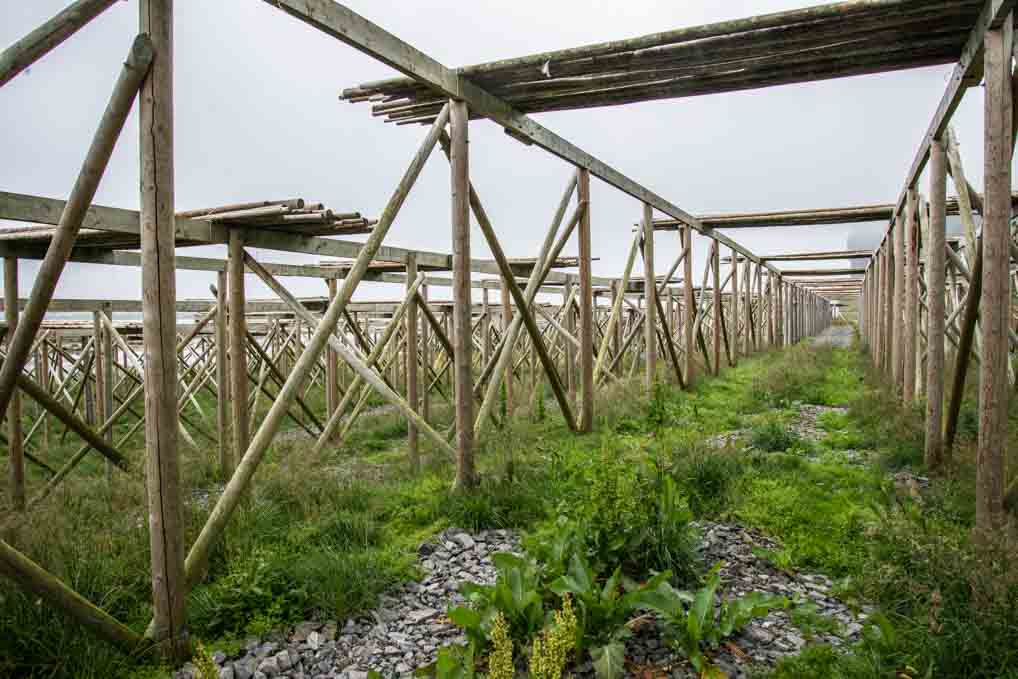As expected we had our first rain for several days overnight and by the morning the weather would be familiar to anyone used to the North Western areas of Northern Europe. Low cloud and light rain. We decided however, because this was our last opportunity, that we would explore the last two islands of the Lofotens, Flakstadoy and Moskensesoy, which are furthest from the mainland.
The last village on the outermost island is called simply Å. We don’t know how this is pronounced, but we have been following the signs to Å ever since we arrived in the Lofotens. The views were limited, but gave us a glimpse of their potential in good weather. Spectacular. There were fewer fjords, but instead jagged mountains plunging directly down into the sea, with little fishing villages clinging onto the small habitable areas left.
Fishing has always been the mainstay of the Lofotens and indeed, until recently the whole of Norway. The Lofotens have an extremely rich stock of cod, which was recognised by King Oystein in 1120, who build standardised 4m x 4m wooden huts for the fishermen and their families to live in. This was not philanthropic gesture, because it ensured the cod catch was maximised and with it his tax revenue. Variations of these huts, known as “rorbuer” can still be seen all over the islands and in particular in the numerous still active fishing communities.

Reine – note the “rorbuers”
The quantity of the cod caught was so huge that most of it was dried on large wooden drying racks, which again are still visible and the resultant dried fish was known as stockfish: Norways major export for hundreds of years. The practise still continues.

Cod drying rack
Perhaps the most spectacular of all the Lofoten Islands is the very last – Moskenes. The whole island is basically mountains, with little land for agriculture. The habitation is in two very picturesque fishing villages of Reine and Å, which cling tightly to two natural rock harbours.

Å
When we had finally reached Å, through numerous tunnels and over various bridges we literally reached the end of the road and given our appointment for Basil tomorrow we had no choice but to turn round and drive all the way back. It is quite interesting driving the same road in two directions in a short period of time, because each route gives a different perspective of the same terrain.
Our appointment in relation to Basil’s fridge is in Svolvaer tomorrow and so we have found a cheap campsite nearby to minimise our drive in the morning. It is called Lyngvaer Lofoten Bobilcamping and is only 180 NOK (€19) a night with 20 NOK for electricity, which is good value for the height of summer. The rain has not ceased since we have arrived and so although I can seen it is located on the edge of a fjord we have not really explored the site at all.
A final note on the fridge. Originally it appeared not to be working on gas. Then we tried it on mains and 12v and again it was not cooling. We’ve had it off while we travelled today, but when we stopped at our campsite I thought, because we were seeing a mechanic tomorrow, I would try it on gas so I could completely confirm that it did not work on any fuel. Guess what, it is now working again on gas!!! So whether we will go to get it checked out tomorrow will probably depend on whether it continues to work overnight or not
